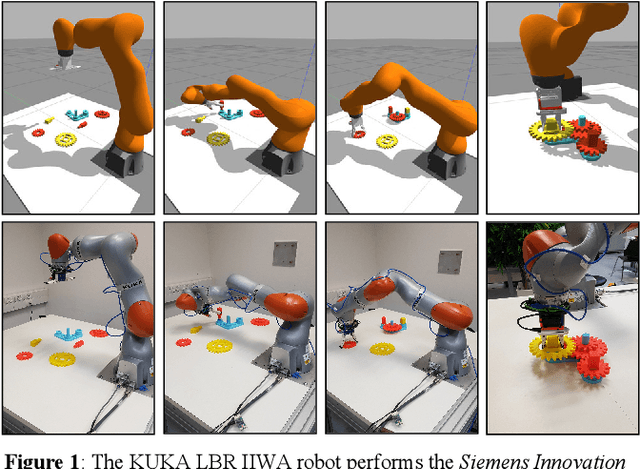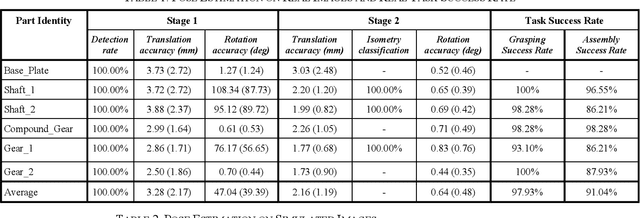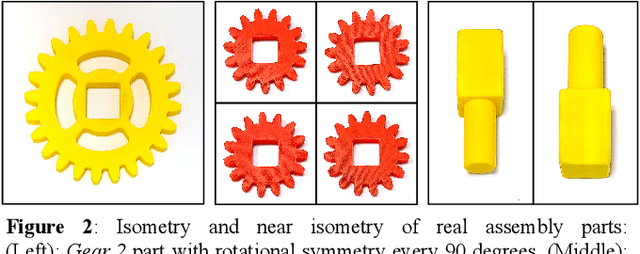Yuval Litvak
Learning Pose Estimation for High-Precision Robotic Assembly Using Simulated Depth Images
Mar 23, 2019



Abstract:Most of industrial robotic assembly tasks today require fixed initial conditions for successful assembly. These constraints induce high production costs and low adaptability to new tasks. In this work we aim towards flexible and adaptable robotic assembly by using 3D CAD models for all parts to be assembled. We focus on a generic assembly task - the Siemens Innovation Challenge - in which a robot needs to assemble a gear-like mechanism with high precision into an operating system. To obtain the millimeter-accuracy required for this task and industrial settings alike, we use a depth camera mounted near the robot end-effector. We present a high-accuracy two-stage pose estimation procedure based on deep convolutional neural networks, which includes detection, pose estimation, refinement, and handling of near- and full symmetries of parts. The networks are trained on simulated depth images with means to ensure successful transfer to the real robot. We obtain an average pose estimation error of 2.16 millimeters and 0.64 degree leading to 91% success rate for robotic assembly of randomly distributed parts. To the best of our knowledge, this is the first time that the Siemens Innovation Challenge is fully addressed, with all the parts assembled with high success rates.
 Add to Chrome
Add to Chrome Add to Firefox
Add to Firefox Add to Edge
Add to Edge